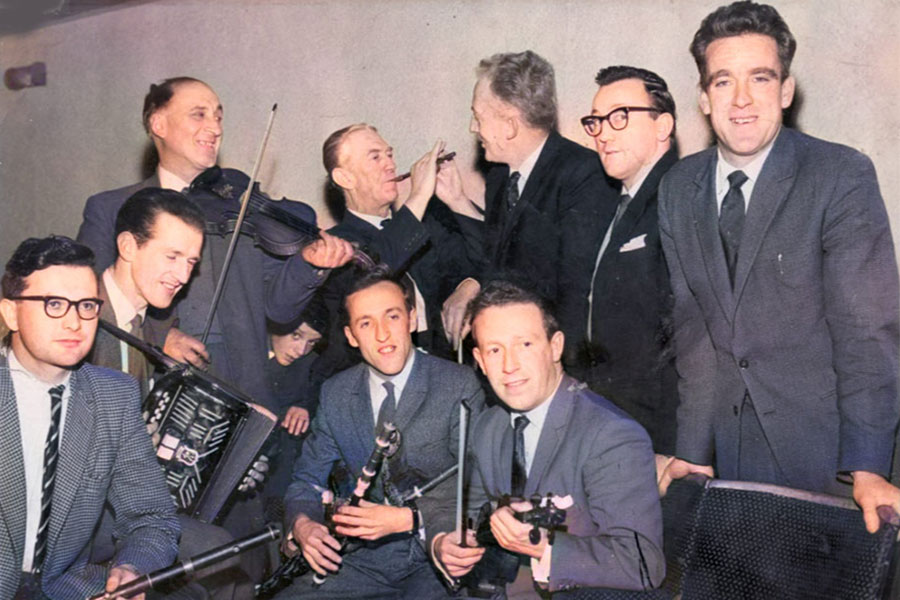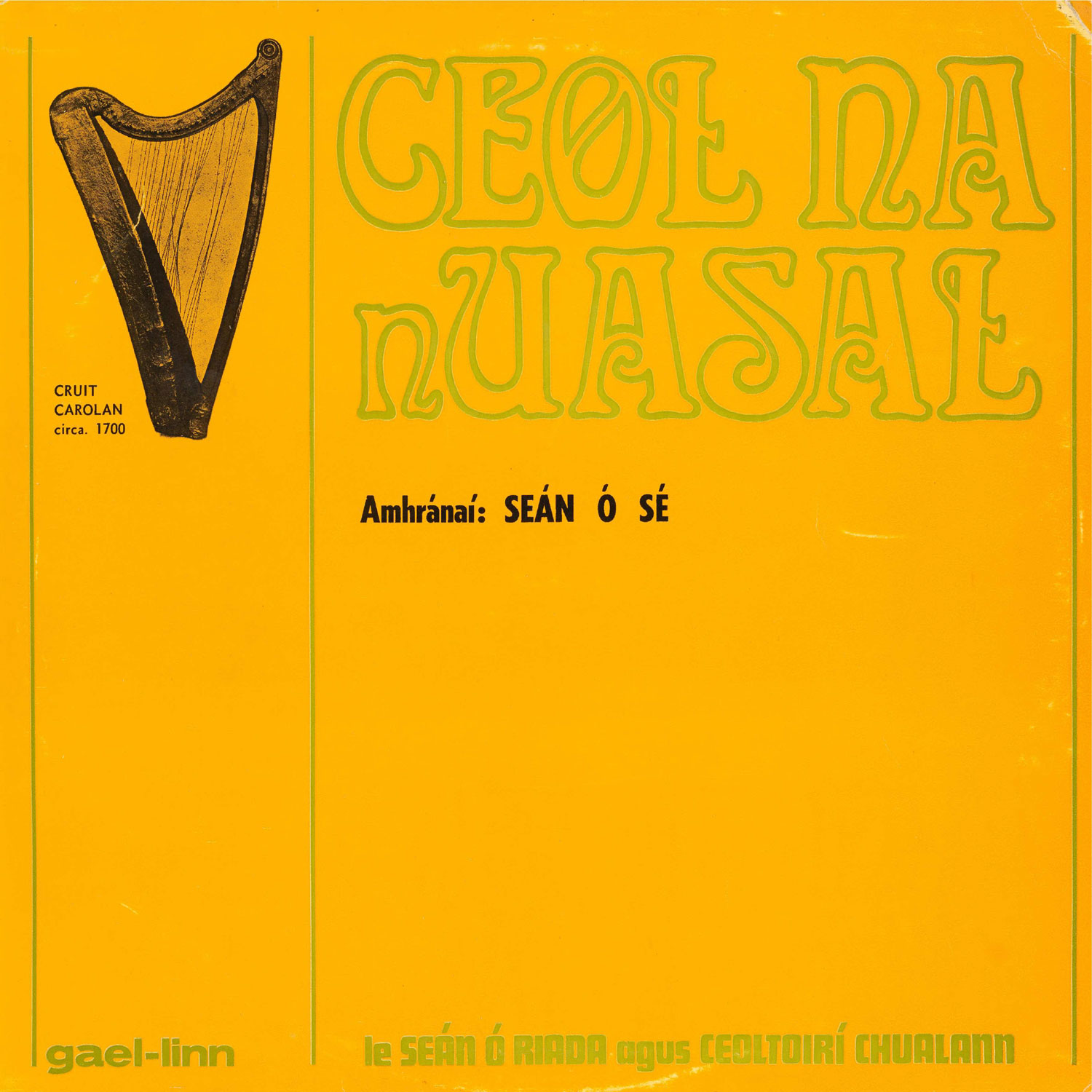


Sleeve Notes
Some of this "Music of the Nobles" can claim a foreign ancestry, and an ancient one at that. The first tune on Side Two, for instance, is clearly related to the old French "Estampie" and although it displays a certain modernity, derived from continuous oral tradition, its medieval origins are plainly visible. The song ("We have brought the Summer with us") used to be sung by bands of maidens, in procession from house to house, at the feast of Bealtaine or May Day.
A later European musical tradition is represented in the air called Seán O Dighe (Side Two, Band Two) which is a typical example of the absorption into Irish music of the 18th century European "style galant". But the most remarkabie instance of such cross-fertilisation is undoubtedly the celebrated Carolan's Concerto (Side One, Band Two). Carolan (Toirdhealbhach O Cearbhalláin, 1670-1738) was the most famous of the Irish harper-composers and a prolific song-writer. The obvious Italianate influences which it shows, in form and idiom, are probably responsible for the story — Goldsmith was the first to retail it in print — that it was an extempore composition in response to a challenge by an Italian musician — sometimes stated to have been Geminiani.
In fact Geminiani did live in Dublin in the early eighteenth century, and it is quite possible that Carolan knew him : certainly quite a number of his works show traces of the influence of the Dubiin "Italian School" which flourished in Crow Street and Fishamble Street. It appears however that the "Concerto" was composed in honour of a Mrs. Power of Loughrea, Co. Galway, the wife of one of his patrons.
Pléaráca na Ruarcach or O'Rourfee's Feast (Side One, Band Three) is another of Carolan's best-known compositions : a setting of a poem by his friend Aodh Mac Gabhráin. The song celebrates the Christmas hospitality of the 16th century Leitrim chieftain, Brian na Múrtha O Ruairc, several of whose descendants were also patrons and friends of Carolan. (The song incidentally was translated in part by Swift and later completed by Scott).
Planxty Maguire (Side One, Band Four) is also attributed to Carolan : he certainly enjoyed the patronage of the great Maguire family of Fermanagh and this tune was probabiy composed in honour of Cúchonnacht Mhac Briain Mhaguidhir. The term planxty signifies a gay tune, and seems to have been first used, if not invented, by the composer.
The high tradition of Irish harping, to which Carolan made such a distin- guished contribution, is represented here by a number of other fine tunes, including An Chúilfliionn (The 66 Goulin" or Fair- haired One) which is perhaps among the most celebrated of all Irish airs (Side One, Band Five). 66 Tabhair Dom do Lámh", composed by Ruairí Dall O Catháin (of the princely family of Derry), who spent some years in Scotland in the early 17th century, is again the subject of a pleasant story. The title, which means "Give Me Your Hand", is sometimes quoted in Latin — "Da mihi Manum" — and was, according to the story, composed as a reconciliation gift for a certain Lady Eglintoun with whom he had had a quarrel. O Catháin was highly thought of in Scotland and was, we are told, invited to play at the Court of James VI (James I of England).
The Belfast Harp Festival of 1792 marked the beginning of the end of an era. Here the musicians gathered, at the invitation of the young patriotic intellectuals of the city, who were just then coming to rediscover their heritage. Many great melodies were rescued from oblivion and only just in time, for Ireland was on the threshold of her most philistine century. Two of the airs collected at the Festival by Edward Bunting, open and close this recorded anthology of Ceol na nUasal: the first (in a variant form) is Caitlín Triall — an outstanding tune with a range of over an octave and a half (Side One, Band One), and at the end, comes "Ag Taisteal na Blárnan” (collected under the title "Stáca an Mhargaidh") as the air to one of the great aisling poems of Eoghan Rua O Súilleabháin (Side Two, Band Four).
Seán Mac Réamoinn